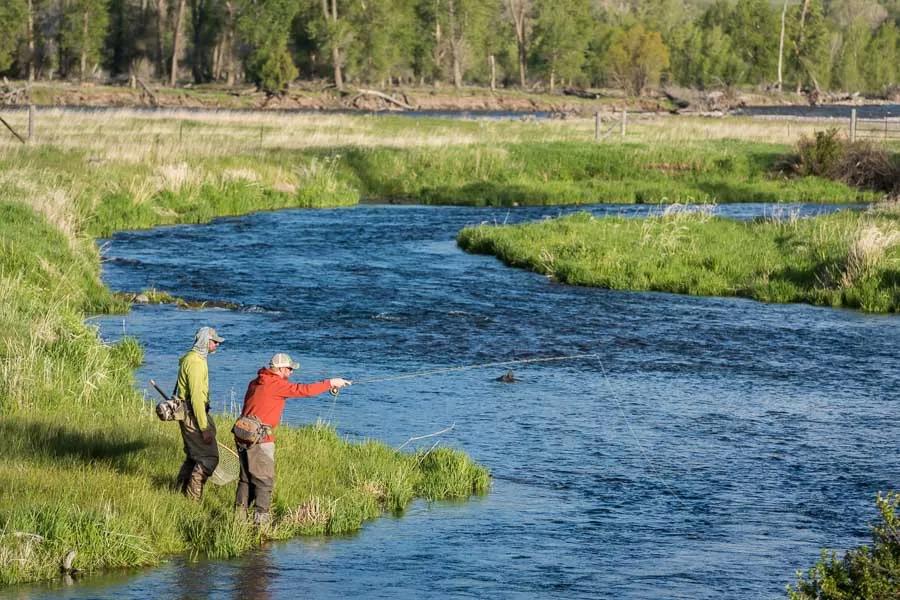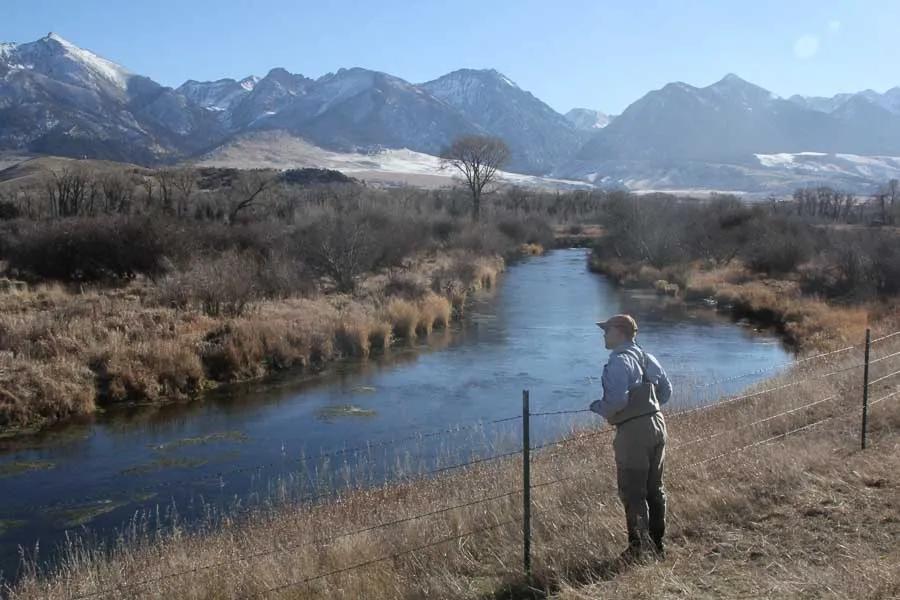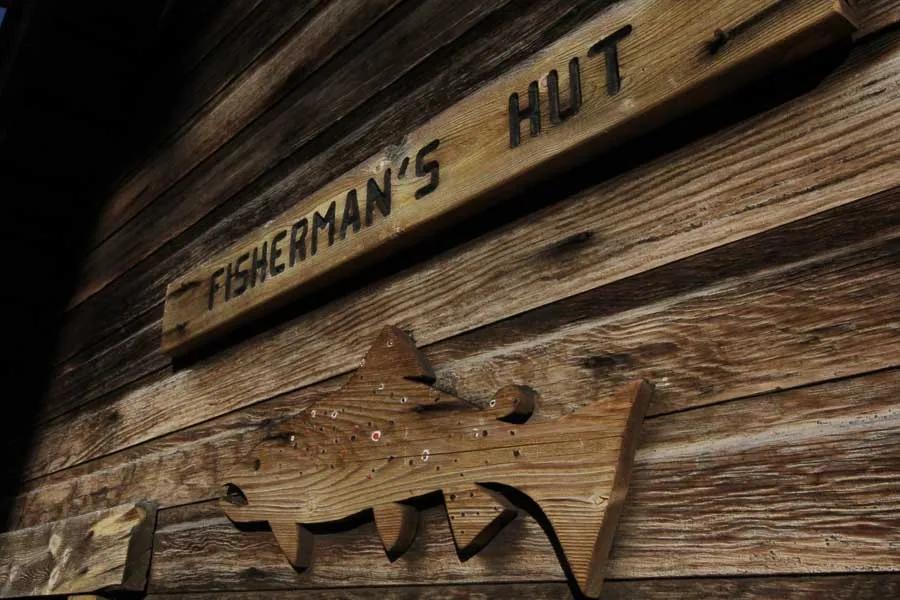
April is a dynamic time to fish Montana's famed wild trout waters. Early season hatches begin to kick into high gear and this is an exciting time for anglers waiting to break out of the long winter cycle. Montana's spring creeks are one of the most dependable options for early spring fishing. Depuy spring creek bolsters a renowned reputation of heavy hatches and technical trout. While this information is founded upon heaps of first hand accounts, many of them are generated from June on. The state of the creek, available forage, and angling pressure are vastly different than the variables of April.
Following the frigid, Paradise Valley winter the whole creek is purged of aquatic grass. The exodus of aquatic grass greatly reduces the available cover for the trout that reside in the creek, making the fish readily accessible to the fly angler. The reduction in grass also provides cleaner substrate, lessening the chances of snagging the aquatic vegetation. Subsurface presentations are unhindered as a result and more presentations are made throughout the course of the day. A greater number of presentations always results in more fish caught. The reduction in aquatic vegetation also lends itself to dry fly success. Long gone are the innumerable boils and swirls that provide the surface character for the creek's numerous dry fly flats. The flats that the fish so eagerly flock to during an emergence are much more uniform in nature. The smooth glass is less apt to tugging on the leader from seemingly every direction, resulting in more drag free presentations.
The water temperatures on the creek can vary significantly from its entrance onto the property to its outlet on colder days. Conversely, on warmer days the water may warm very little. Regardless, water temperatures are usually in the mid to upper 40’s.
In April consider targeting the broad, moderate runs and the deeper pools. Metabolic rates heavily dictate holding water and these water types best suit the needs of trout for the water temperatures associated with April.

The water temperatures of April make favorable water conditions for baetis activity. Baetis become active in the late morning and start their emergence process by ballooning to the surface with stores of internal gas. During this time baetis lose their swimming ability and are at the mercy of their own buoyancy and the current. This draws out the emergence process and the insects drift from the middle of the column to the surface film over great distances. This can prompt the trout keyed in on the insects to suspend in the column. Because of this it’s often effective to reduce the weight of a nymph rig and employ emerger style patterns like a sparkle wing RS2, floating nymph, or WD-40. Once the emerging insect finds the surface the surface tension must be mitigated. Because this also requires a significant time commitment, time prior to the consumption of duns should be spent fishing under the film. Fly patterns such as students and greased RS2s provide an adequate offering. As the fish continue feeding upward in the column and key in on duns, the sage angler should follow suit. Due to the cool, overcast, and often damp conditions that baetis generally emerge, it seems intuitive that the insects float for great distances as duns to dry their wings and straighten themselves out.
Midges are always abundant and DePuys sees twelve months of midge activity. Midges within the creek show both color and size variance. Patterns in the 16-22 size range with minimal bulk provide the most effective profile. Colors of black, red, cream, and olive should be present in a well-rounded box with emphasis on the first three. Midge hatches most often occur on the tails of the fringe of the day. As midges pupate they achieve a silver hue due to the entrapped nitrogen gas they utilize to ascend to the surface. Because of this, it's important to have silver ribbed patterns in the various colors. For reaches of the river that do not possess a silty, soft bottom, select black and cream patterns. Sediment rich portions of the river harbor the hemoglobin latent “blood midges.” White beads or wings of poly yarn on midge imitations can prove to be effective as they adequately represent the gills of the insect.

In late April the Yellowstone river can see thick hatches of Mother’s Day Caddis that often blow into the creek. This can elicit a spectacular feeding frenzy bringing every trout to the surface. While a visit to the creek cannot be scheduled around this event it does happen every year.
April also marks the beginning of the rainbow trout spawn. Residents of the embedded ponds, the creek, and the Yellowstone River flock to the moving water and feed in a vivacious manner. While it’s important to let spawning fish spawn, only a small percentage of fish are actively spawning at any given time. This leaves the bulk of the fish aggressive and famished. Trout spawn on fine gravel in faster currents. Water adjacent to these zones serve as likely areas to hunt for these large rainbows. Because of the influx of eggs, brown trout also prowl these zones and consequently migrate with the rainbows.
For anglers inclined to strip, damsels, callibaetis, and leeches can be stripped in the stillwater sections for the browns and rainbows that prowl the depths of the two ponds embedded in the creek. This can be productive and highly engaging. Indicator techniques can also be employed.
April is, and forever will be, one of the best months to fish DePuy’s. Heavy hatches and increased fish populations provide ample angling opportunities. April fishing dates also routinely produces caught, native Yellowstone Cutthroat.
